This was published 4 years ago
Kakadu, Northern Territory travel guide: The future for Australia's largest national park
By Julie Miller
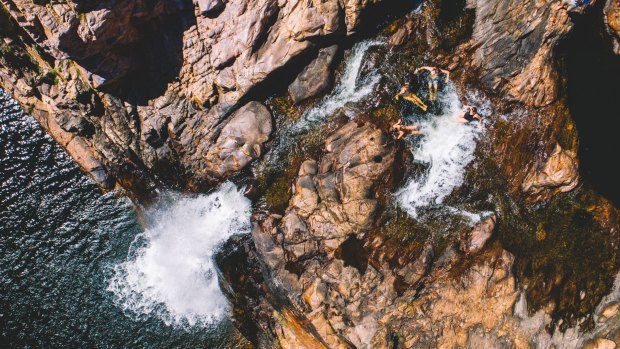
Visitors relaxing in the pristine natural waterfall and plunge pool at Maguk, in the south of Kakadu National Park.Credit: Tourism NT
As the rising orange sun permeates the mist over the Kakadu floodplains, where brolgas and jabiru dance amongst lotus lilies, we watch in silent awe as a massive 4.5 metre saltwater crocodile called Maxi sashays towards our boat.
"He's staring at the floating bain-marie," says Dennis Miller, our Indigenous tour guide, whispering his words in his mesmerising storytelling tones. "These crocodiles – ginga in our language – are top of the food chain in Australia. You are not. Everything wants to bite you and eat you out here."
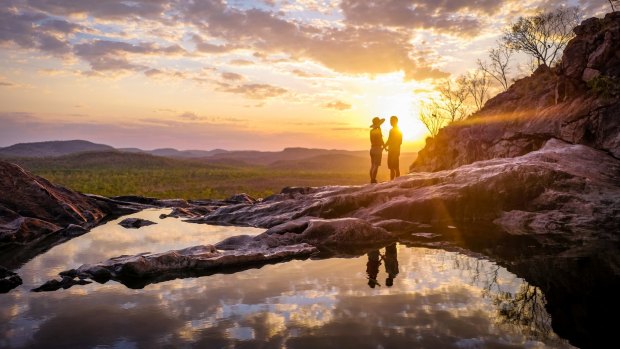
The magnificent Gunlom Falls.Credit: Tourism NT
Dennis then slams his hands together in an animated demonstration of a croc's crushing jaws, reducing his captive audience into peals of nervous laughter.
I've joined a dawn excursion with Yellow Water Cruises, exploring the evocative wetlands near the tourism hub of Cooinda in Kakadu National Park, Australia's largest designated wilderness, located three hours east of Darwin in Australia's Top End.
The final lagoon in the Jim Jim Creek system, Yellow Water billabong is home to a staggering 80 saltwater crocodiles per kilometre, with the fearsome apex predator just one of 117 reptile species to inhabit Kakadu, alongside more than 280 species of birds (one-third of Australia's birds), 60 mammal and more than 10,000 insect species.
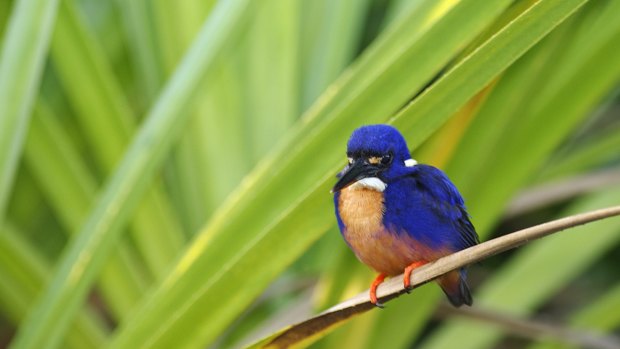
A common kingfisher at Kakadu.Credit: iStock
Owned by the Bininj Mungguy people, but jointly managed by Parks Australia, Kakadu encompasses nearly 20,000 square kilometres of floodplains, savannah woodlands, stone plateaus, plummeting waterfalls and rocky escarpments that hold the 65,000-year-old secrets of the oldest continuous culture on earth.
THE CROCODILE DUNDEE EFFECT
Forty years old this year, Kakadu National Park was mired with controversy from its outset, with the first stage declared in 1979 largely as an attempt to reconcile issues of Aboriginal land rights, conservation and mining, which had escalated in the early 1970s after significant uranium deposits were discovered in the Alligator River region.
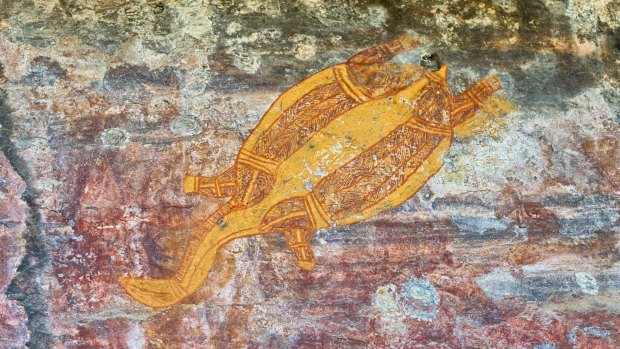
Kakadu rock art.Credit: Getty Images
The park was expanded in 1984 and between 1987 to 1991; while in 1981, Kakadu was inscribed on the UNESCO World Heritage list. It's one of just 23 places in the world recognised for both its natural and cultural significance.
But it took a fictional, knife-wielding, buffalo-hypnotising larrikin to catapult Kakadu into the international spotlight, with Paul Hogan's 1986 hit film Crocodile Dundee, proving the most successful unintentional marketing exercise in Australian tourism history.
Suddenly, the Top End was hot property; visitors couldn't get enough of its crocs and birdlife, its open spaces, curious characters and intriguing traditional culture as they clamoured to visit locations made famous by the movie.
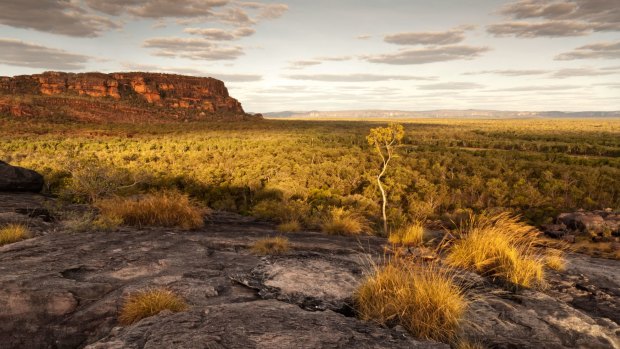
A single tree catches the last light at dusk in Nourlangie badlands.Credit: iStock
But from a peak of 300,000 visitors a year in the late 80s, visitation to this exalted Northern Territory wilderness has plummeted to just 185,000, with international visitation dropping to a mere 32,000 per year – an estimated 18 per cent of total visitor numbers.
WHAT TO DO ABOUT KAKADU
So what's gone wrong over the past 30 years? Why are the majority of the 9.4 million international visitors to Australia each year ignoring Australia's largest and arguably most captivating national park, a destination so rich in culture, biodiversity and landscapes?
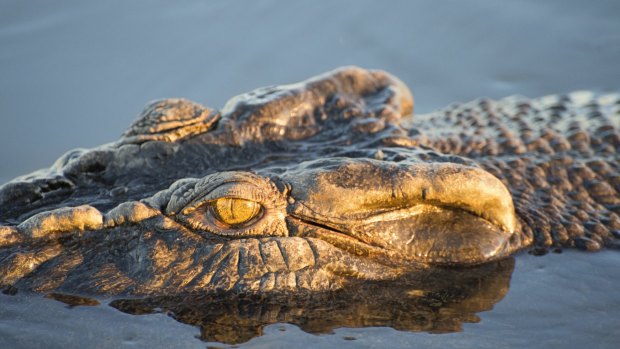
A saltwater crocodile cruising along Yellow Water Billabong, Kakadu's most famous wetland.Credit: Tourism NT
"Kakadu is top of many people's bucket list; the problem is, many of them kick the bucket before getting there," says Peter Hook, a spokesman for Kakadu Tourism.
"Access is the critical issue – Kakadu can be hard work, you can't just 'pop down' for a day, you need to be prepared.
"Unlike Uluru, there are no direct flights, accommodation is limited, many roads and attractions are inaccessible during the Wet, and good staff can be difficult to source.
"It's a long struggle – Kakadu will always be authentic, but we need to find a way of translating its incredible cultural heritage into products that can be experienced."
The challenges of travelling in a remote location are certainly apparent during my recent road trip to Kakadu: distances are vast, roads bad, signage inadequate and communications unreliable.
Despite there being only one main highway, we still manage to get lost twice. A visit to the esoteric Nourlangie rock art site, for instance, was almost thwarted when Google Maps sent us in the opposite direction towards an Aboriginal community bearing the same name and patchy phone service means we can't let our tour on-site guide know we are horribly lost, so by the time we arrive, an hour late, the guide has understandably already left to pursue other duties.
On a Spirit of Kakadu day trip, we bounce and jar over brain-rattling corrugations for 30 kilometres to reach the magnificent Gunlom Falls; and while we manage the journey in a four-wheel drive bus, lesser vehicles clearly struggle with the potholes.
"This is nothing," our tour guide Tim tells me, barely audible over the groan of our vibrating vehicle. "We used to go to Jim Jim Falls, but this year the road is so bad, we've dropped it from the itinerary.
"Jim Jim and Twin Falls are two of the most iconic sights in Kakadu, but the access is so bad, they are only open for a few months a year – and even then, getting there is a real deterrent."
Despite the uncomfortable journey, Gunlom Falls – previously known as UDP Falls after the uranium company that operated at nearby Coronation Hill until 1964 – is teeming, a trail of visitors scrambling up the under-repair pathway to the infinity pool made famous in Crocodile Dundee.
The sweaty ascent is gratifying, however – the croc-free waterholes are a cool reprieve from the searing midday heat, while sweeping views from the perilous escarpment capture the essence of Kakadu, a vast, unadulterated wilderness where the concept of time seems negligible.
Operating out of Cooinda – the largest tourist hub in the Park, offering caravan and camping facilities, lodge accommodation and a glamping village – both the Spirit of Kakadu tour and Yellow Water Cruises are Indigenous-owned, but only employ a handful of local guides – another major problem, according to former Kakadu Tourism board member and Cooinda's longest-serving guide, Mandy Muir.
"Visitors really want more cultural immersion, more interaction with our mob – the demand is huge, but there's just not enough of us, not enough product," says Muir, who grew up in Kakadu, her mother's traditional country, and now runs her own tourism venture, Kakadu Billabong Safari Camp. "I'd like to see a cultural cruise on Yellow Water for instance, but they keep saying it's all about the wildlife - no one is listening.
"We need to get our young ones working – we need better training, better support, and transport services for our people working in tourism. It would be great if we could get transport to Cooinda from our community, the roads are shocking to get to work, especially in the wet season."
TALK OF THE TOWN
Meanwhile, it seems Kakadu's main town, Jabiru, has been given a reprieve as the uncomfortable marriage of tourism and mining draws to an end. In 2021, the Ranger Mine – one of three parcels of land within Kakadu originally set aside for uranium mining – will finally close.
Owned by Rio Tinto, this controversial mine has been operating on Mirarr-owned land for 30 years. The Jabiluka site has been under restoration since 2003; while Koongarra, a 12.5 square kilometre enclave bordering the Nourlangie rock art site, was finally included in the World Heritage estate in 2013 after traditional owner Jeffrey Lee heroically resisted pressure – and significant financial remuneration – from the French nuclear and mining company, Areva, for it to be mined.
Created as the main service centre for Ranger mine, Jabiru is today somewhat of a drab little town, functional rather than enticing: there's a bank, a post office, a medical centre and an overpriced supermarket – the only place in the town plaza, we discover, to buy coffee and a toastie.
Most Jabiru visitors head to the croc-shaped Mercure Kakadu Crocodile Hotel – the most luxurious accommodation within Kakadu National Park – to enjoy its facilities, including a restaurant, bar, swimming pool and an interactive indigenous art gallery. Outside of the hotel, however, there's little reason for visitors to linger.
According to the original mining lease, Jabiru was to be bulldozed in 2021, returning it to its pre-mining condition. In July 2019, however, the town was tossed a lifeline, with the Northern Territory Labor Government announcing it will invest $135.5 million over four years to help transform Jabiru into a tourism and cultural centre, guided by its traditional Mirarr owners.
The estimated cost for this redevelopment is $446 million, including $256.3million in publicly-funded projects, $133.5 million in joint private and public projects and a further $56.2 million in privately-funded commercial projects.
The vision is for a "world leading, ecologically sustainable hub for Aboriginal culture that will continue to attract visitors from across the globe", with the masterplan including lakeside recreational facilities (for croc-free swimming), a wetland and botanical feature, a new retail area, an education campus, a wellness centre and a five-star lodge featuring overwater bungalows.
The showpiece of the planned development, however, is a $57.7 million World Heritage interpretive centre, located on the waterfront and using the latest technology to tell the stories of the world's oldest living culture.
"I'm really excited for this cultural centre that's suggested for Jabiru," says Kakadu Tourism chairman, Rick Allert. "It's going to be significant and a major attraction, along the lines of the Epcot Centre in Orlando, that augmented-reality experience where you are taken back into the Dreamtime. I think it will be marvellous."
SHOW US THE MONEY
If a promised $216 million injection of funds from the federal government over the next 10 years materialises, Kakadu National Park itself also appears to have a brighter future.
"We really welcome the federal government's promised investment in Kakadu," Allert says. "Our Cooinda and Jabiru properties are fully Indigenous-owned and have provided the lifeblood of Kakadu's tourism industry for many decades, but there is no doubt that tourism infrastructure has really held back the industry from progressing since the pinnacle of the Crocodile Dundee days.
"Kakadu should be a showcase for Indigenous culture and heritage and with the committed federal government spending, we believe we can provide a sustainable future for the region and its people."
Allert, who is also the chairman of Voyages Indigenous Tourism, is acutely aware of how funding can change the fate of a destination. "Ayers Rock Resort and Uluru are now star attractions, and that's because of access, refurbishment of facilities and new attractions," he tells me.
"[The] Field of Light [art installation] has been an outstanding success. You need to keep upgrading your product, and that should happen in Kakadu with the commitment from the Northern Territory and federal governments."
Ensuring the funds are funnelled in the right direction is the main concern for Mandy Muir, however. "They've promised us bitumen roads, and there are other issues to be dealt with – but the money should be directed into helping our communities," she says.
"We want to make sure we're sitting at the table - it wouldn't be right if someone comes in from outside and gets all the funds. We need joint agreements. It's all about closing the gap and relieving our poverty."
Fortunately, Kakadu Tourism appears to be on the same page, working in consultation with traditional owners to create opportunity for both locals and visitors.
"Indigenous experiences and culture are great attractions, and people have a thirst for that," Allert says. "Our Indigenous Engagement Strategy has improved dramatically.
"But we want more and more indigenous people to work in our resorts to give visitors the cultural experience they are looking for. With this new focus on Kakadu, I think it will re-establish the prominence it had years ago – the wheel has turned."
FIVE THINGS THAT MAKE KAKADU KING
THE WETLANDS
Kakadu is a twitcher's dream, awash with incredible birdlife in numbers and variety rarely seen anywhere else. Voted the best birdwatching destination in Australia by Australian Geographic, a morning cruise on the Kakadu wetlands will have even the most dedicated cityslicker reaching for binoculars to catch a glimpse of white-bellied sea eagles in treetops, tiny iridescent azure kingfishers flitting through reeds, and gawky yet graceful jabirus spearing snakes with their prong-like beaks.
THE WATERFALLS
In an increasingly dry nation, even a trickle of water spilling over an escarpment is cause for excitement; but Kakadu has left the hose running, with cascades that thunder with seasonal ferocity into crystalline pools reflecting the ancient stone walls above. At 200 metres high, Jim Jim is the Northern Territory's tallest falls, while the split chutes of Twin Falls are best appreciated from the air during a scenic flight.
THE SOLITUDE
Even during peak season, the human footprint on the timeless wilderness of Kakadu seems insignificant. Gazing out at the endless savannah from the Gunlom Falls' infinity pool, it's possible to feel like you're the only person in the world, despite the presence of dozens of other tourists playing in the water. Kakadu can give hope that travelling and living lightly, without impacting the delicate environment, is still possible.
THE CROCODILES
It's estimated there are more than 10,000 crocodiles lurking within Kakadu National Park, and somehow these prehistoric predators seem bigger, bolder and more awe-inspiring in their natural domain than in captivity. Mature male salties can reach more than six metres in length, with the biggest monsters – like Yellow Water Billabong's Maxi – the "boss" of around seven females.
THE SPIRITUALITY
Uluru has it, as do other astounding landforms like Devils Tower in Wyoming. The ability to reduce you to silence. An undeniable, otherworldly pull. A sense that we're not alone in the universe. Standing on a bluff overlooking the Arnhem Land escarpment near Nourlangie rock art gallery, one can't help but sense this is sacred land. It's spooky, a little unsettling. But also incredible.
FIVE GREAT WAYS TO EXPERIENCE KAKADU
FREE RANGER WALKS
Free ranger-guided activities are included with the Kakadu Park Pass, and are a fascinating way to explore the link between people and country. Tours include rock art interpretations, wildlife talks and pop-up cultural activities held at Warradjan Cultural Centre, with local painters and basket weavers always happy for you to sit down and join them on an artistic venture. See parksaustralia.gov.au
YELLOW WATER CRUISE
Dawn and sunset is when the Kakadu wetlands are at their most evocative, with the temperatures cool and the wildlife active. An interpretive cruise on the misty Yellow Water billabong is the most tranquil way to experience the ecological diversity of Kakadu, with an Indigenous perspective an essential part of the commentary. See kakadutourism.com
SCENIC FLIGHTS
While road access to Kakadu's waterfalls may be inconsistent, the thundering waters can always be experienced from the air, with Wet season lights over Kakadu's escarpment, winding rivers and endless floodplains particularly thrilling. Both helicopter and fixed-wing trips are available out of Jabiru. See parksaustralia.gov.au
INDIGENOUS TOURS
No one knows this complex country better than its traditional owners, so spending time with them is an experience that will remain with you forever. Join Mandy Muir at her Kakadu Billabong Safari camp to learn about nature's bounty, while Victor Cooper's Ayal Aboriginal Tours offer a Bininj interpretation of Kakadu's rock art. See kakadubillabongsafaricamp.com.au; ayalkakadu.com
FESTIVALS
Held during less-crowded shoulder seasons, festivals celebrating Kakadu's 65,000 history present great opportunities to interact with traditional custodians and gain deeper insight into its nature, food and art. A Taste of Kakadu, held in May, treats guests to a huge range of cultural and culinary events; while Kakadu Bird Week in September is a twitcher's paradise. See parksaustralia.gov.au
TRIP NOTES
FLY
Jetstar, Virgin Australia and Qantas all have daily direct flights from Sydney and Melbourne to Darwin. See jetstar.com/au; virginaustralia.com; qantas.com/au
STAY
Peak season rates at Dreaming@HomeBillabong, Cooinda, start $229 a night for a couple and $269 a night for a family. See kakadutourism.com
MORE
Sign up for the Traveller Deals newsletter
Get exclusive travel deals delivered straight to your inbox. Sign up now.